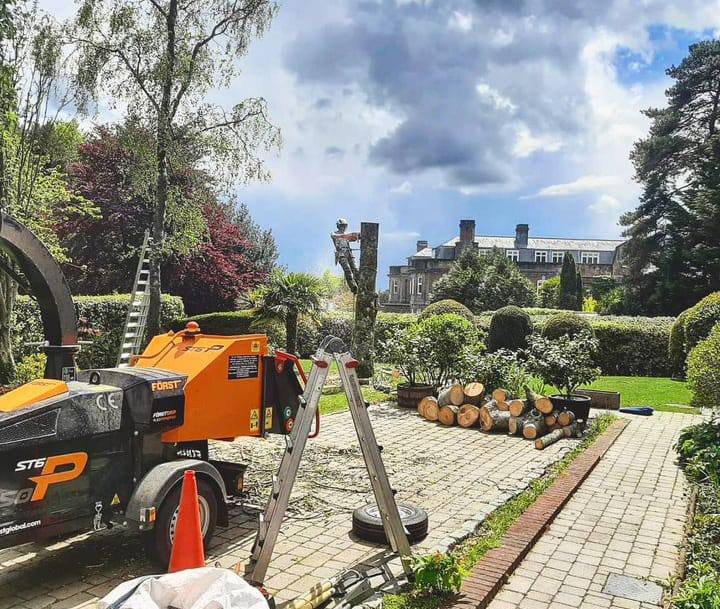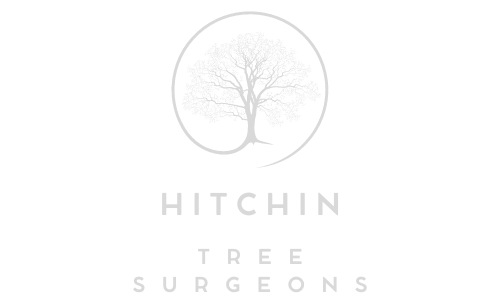Should You Remove That Tree? A Guide to Making the Right Decision
Introduction
Trees add beauty, shade, and environmental benefits to any property. However, there are situations where tree removal becomes necessary for safety, property protection, or landscape management. Deciding whether to remove a tree can be difficult, as factors such as health, location, and potential risks all come into play.
At Hitchin Tree Surgeons, we provide expert tree assessments and removal services in Hitchin, Hertfordshire. This guide will help homeowners and landowners determine when tree removal is the best option and what to consider before making the decision.
Key Takeaways
- Tree removal is necessary when a tree poses a safety risk, is diseased, or causes property damage.
- Signs that indicate removal include dead branches, leaning, root damage, and fungal growth.
- Local regulations may require permission for tree removal, especially for protected trees.
- Professional tree surgeons ensure safe and responsible removal, minimising damage to surrounding areas.
When Should You Consider Tree Removal?
1. The Tree is Dead or Dying
A dead or dying tree is not only an eyesore but also a safety hazard. As the tree weakens, branches may fall, or the entire tree could collapse, especially in high winds.
- Look for bare branches with no leaves outside of the dormant season.
- Check for bark peeling off, which can indicate internal decay.
- Scratch a small branch—if it’s dry and brittle with no green inside, the tree may be dead.
2. The Tree is Leaning Dangerously
A tree that suddenly starts leaning or has developed a significant tilt could be at risk of falling. This is particularly concerning if it is near a home, road, or power lines.
- If the lean is new or worsening, it may indicate structural instability.
- Visible cracks in the trunk or soil upheaval near the base suggest root failure.
3. Significant Damage from Storms or Disease
Storm damage, high winds, or disease can weaken a tree beyond recovery. While some damaged trees can be pruned and saved, others may be too compromised.
- Large broken limbs or split trunks can cause structural instability.
- Fungal growth at the base, such as mushrooms, may indicate internal rot.
- Hollow sections in the trunk suggest the tree’s core is decayed.
4. The Roots are Causing Damage
Tree roots can spread extensively underground, affecting foundations, pavements, and underground utilities. If you notice:
- Cracked driveways, pathways, or walls, it may be due to invasive roots.
- Lifted paving slabs or blocked drains, tree roots could be the cause.
In such cases, removal may be the best option to prevent further property damage.
5. The Tree is Too Close to a Structure
Trees planted too close to buildings can cause structural issues, shading problems, and even interfere with gutters and roofing.
- If branches overhang the roof, they can drop debris and increase the risk of damage.
- Large trees close to buildings can cause foundation issues over time.
- Some trees may block natural light, affecting energy efficiency.
6. Invasive or Unwanted Species
Some trees grow aggressively and may not be suitable for a particular landscape. Fast-growing species can:
- Outcompete native plants, affecting biodiversity.
- Produce excessive seeds or suckers, spreading uncontrollably.
- Have weak wood that is prone to breaking, making them a hazard.
What to Consider Before Removing a Tree
1. Tree Preservation Orders (TPOs) and Legal Restrictions
Before removing a tree, check if it is protected under a Tree Preservation Order (TPO) or located in a conservation area. Cutting down a protected tree without permission can result in legal consequences.
- Contact the local council in Hitchin, Hertfordshire, to confirm legal requirements.
- If the tree is protected, you may need to apply for planning permission before removal.
2. Alternative Solutions
Not all problematic trees need to be removed. A professional tree surgeon may recommend:
- Pruning and crown reduction to remove hazardous branches while keeping the tree.
- Bracing and cabling to support weak limbs and prevent failure.
- Relocating smaller trees instead of cutting them down entirely.
3. Environmental Impact
Removing a tree affects the local ecosystem. Birds, insects, and other wildlife may rely on it for shelter and food. If a tree must be removed, consider planting a new tree elsewhere on your property.
The Importance of Professional Tree Removal
Tree removal can be dangerous, especially for large or compromised trees. Hiring a qualified tree surgeon ensures:
- Safe and controlled removal using the right equipment.
- Minimal impact on surrounding property and landscaping.
- Proper disposal or recycling of tree waste.
At Hitchin Tree Surgeons, we specialise in professional tree removal services in Hitchin, Hertfordshire, ensuring safety and compliance with local regulations.
Conclusion
Deciding whether to remove a tree requires careful consideration of safety, property impact, and environmental factors. If a tree is dead, diseased, leaning, or causing structural damage, removal may be the best option. However, alternative solutions like pruning or bracing should be explored first.
At Hitchin Tree Surgeons, we provide expert tree assessments and safe removal services in Hitchin, Hertfordshire. Contact us today for professional advice and tree care solutions tailored to your property’s needs.
Call us on: 01462 412 994
Click here to find out more about Hitchin Tree Surgeons
Click here to complete our contact form and see how we can help with your trees needs.

